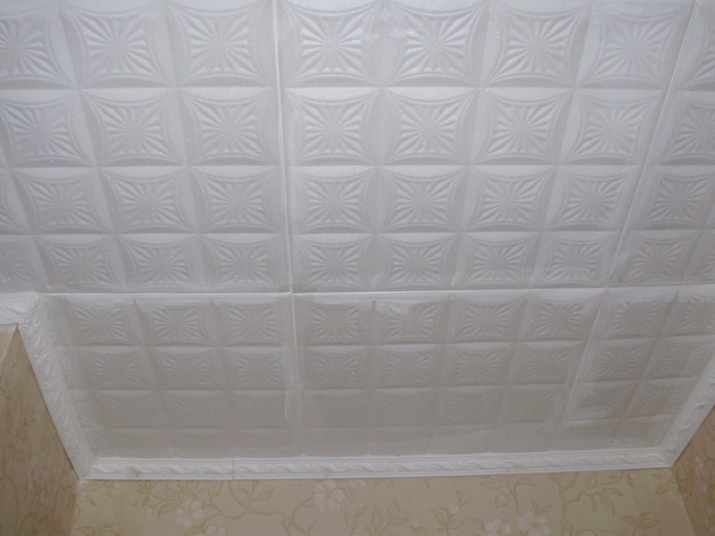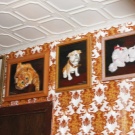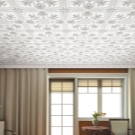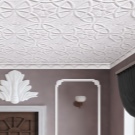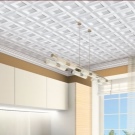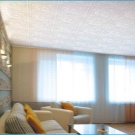Ceiling tiles of polystyrene foam
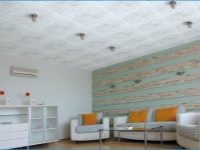
The modern market of construction and finishing materials offers a variety of options for interior design, designed for any purse. These are suspended, suspended and rack and pinion ceilings, decorative plaster and foam polystyrene tiles. The last option is the most economical of all listed. To quickly and inexpensively update the ceiling covering, you do not need to install a suspension system or other profiles: only glue and tiles.
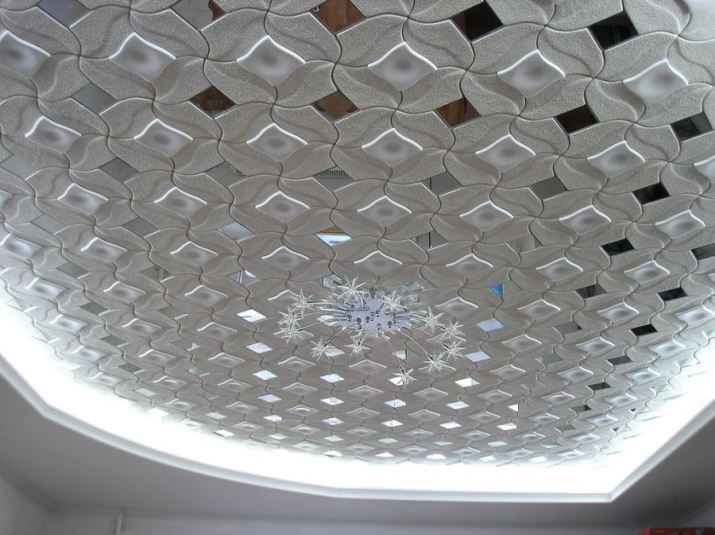
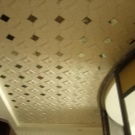
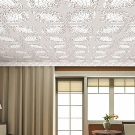
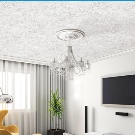
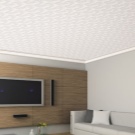
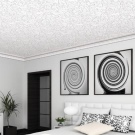
Features
Styrofoam tile - a universal material that looks great not only in the house, but also in the office and industrial premises. The good thing is that today's range offers a huge choice of colors and textures of such tiles. A variety of decorative elements will help to harmoniously complete the repair.
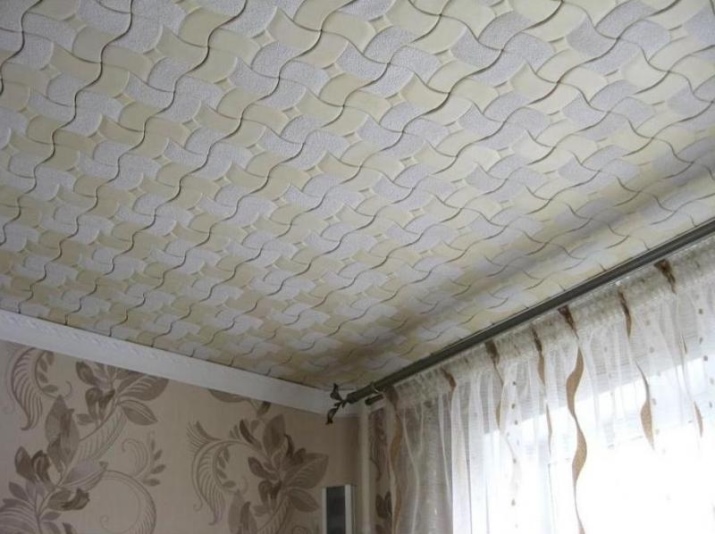
Styrofoam tiles are unique in their own way. It perfectly withstands high humidity and sudden temperature changes, is lightweight, practical and aesthetically attractive. Perfectly suited for decorating corridors, bathrooms, living rooms, kitchens, bedrooms and other rooms.
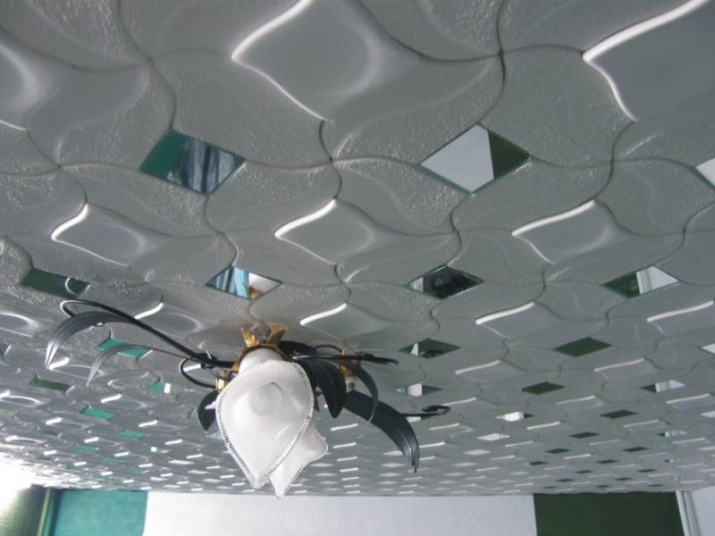
If the ceiling, clearly marked into squares, is bored and wants something new, then seamless tiles are the perfect solution to this problem.

Specially shaped panels are used to create an even, homogeneous surface. They are created by stamping and have a standard size of 50x50 cm. The tiles are available in a flat version or textured with different patterns.
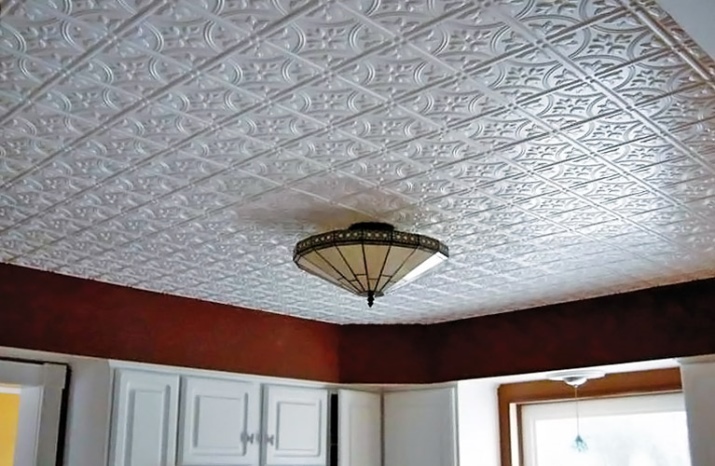
Due to the special shape and softer texture, the tiles laid on the ceiling look very homogeneous, without clear geometric boundaries. It creates a sense of wholeness.
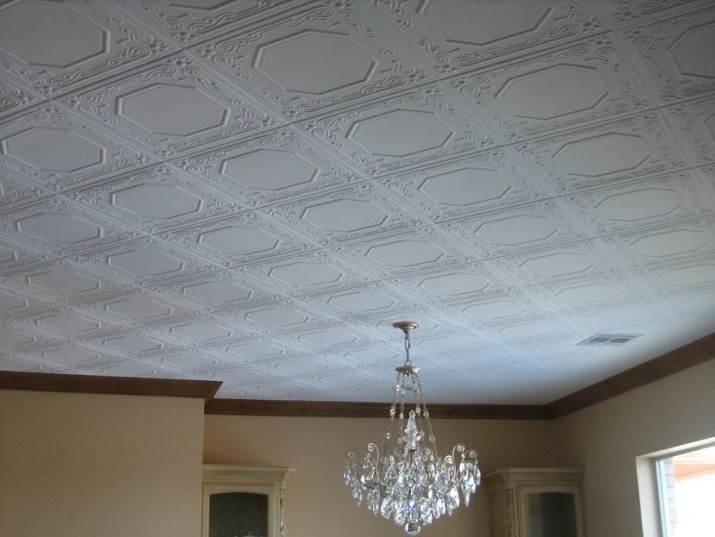
Tile types and cover design
Styrofoam tiles, depending on the method of production, are divided into several groups:
- Stamped. A sheet of polystyrene is placed in a special mold and pressed. The result is a rather fragile panel, the main advantage of which is a low price. It can not be washed, you can only sometimes wipe with a damp cloth. This board comes in a limited range of ornaments and is ideal for those who do not want to create original, unusual interiors, but prefer the traditional classics.
- Extruded. The most durable and long-lasting option. Under the influence of high temperature and special additives, polystyrene turns into foam, which is later converted into cladding material using a vacuum. The panel has a flat, solid structure without inclusions and pores. It is often made to imitate marble, natural wood or other natural materials, or simply white. Due to excellent characteristics, it is recommended for use in rooms with high humidity.
- Injection. A sheet of foam is placed in a special mold for sintering. The thickness of the finished panel is from 9 to 14 mm. Such a board is characterized by a clear, beautiful pattern, correct geometric shape, a wide range of ornaments and textures. The board can be painted and washed. The material has high sound and thermal insulation properties.
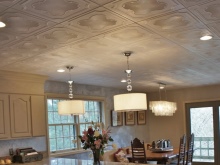
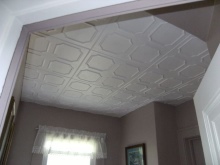
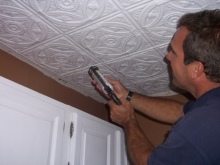
Depending on the type of surface, the board is divided into the following groups:
- Mirror surface. To create a glossy mirror shine, a special light-reflective layer is applied to the surface of the panel.
- Laminated surface. A film of different colors is applied to the tile.
- Seamless. The panel's edge has a perfectly straight outline. The tile is laid in an even, smooth layer.

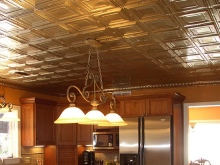
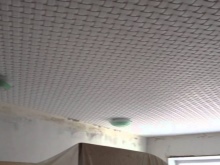
Dimensions
Styrofoam tiles are available mainly in the form of a square or rectangle. The most popular sizes are: 40x40, 50x50, 60x60, 30x60, 30x70, 40x70 cm.
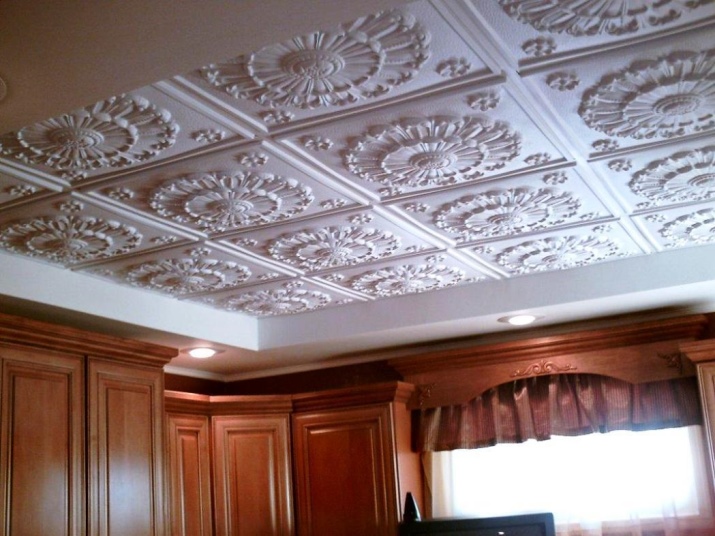
Panels can be smooth or textured, have a classic or original design, be convex or have a pressed ornament, be solid or perforated.
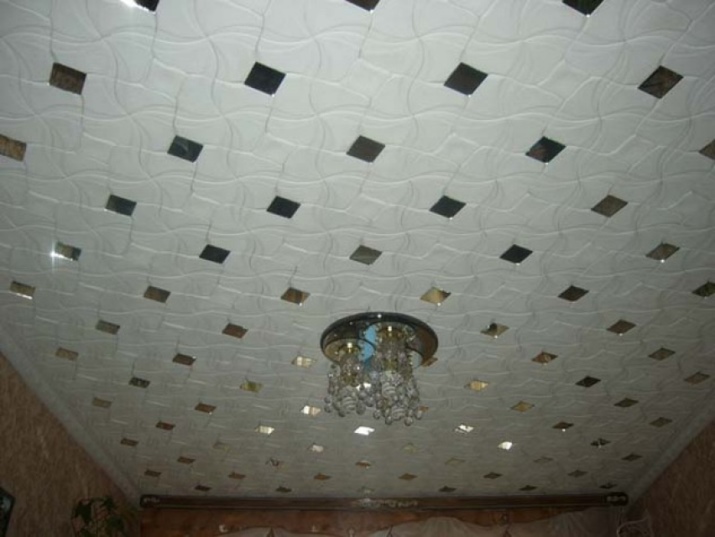
Various rosettes, rhombuses, skirting boards and other elements are used as decor for the design of the ceiling covering.

Tips for choosing
The choice of tiles directly depends on its functional purpose.
The price of stamped panels is quite low, but it is also the most fragile and short-lived material. Tiles are about 6-8 mm thick, when cutting must be especially careful not to break it, and the edges are unlikely to be perfectly flat.
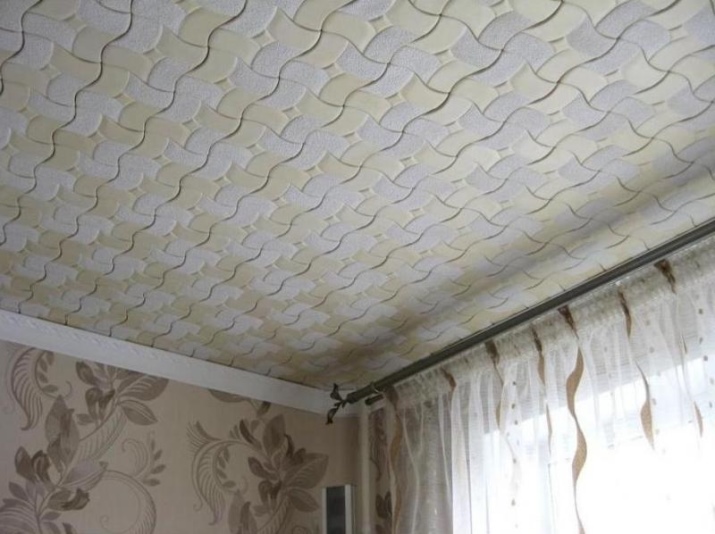
For rooms with high humidity you can use extruded tiles. It is more durable than stamped, in addition, it is additionally protected by a dust- and water-repellent film.
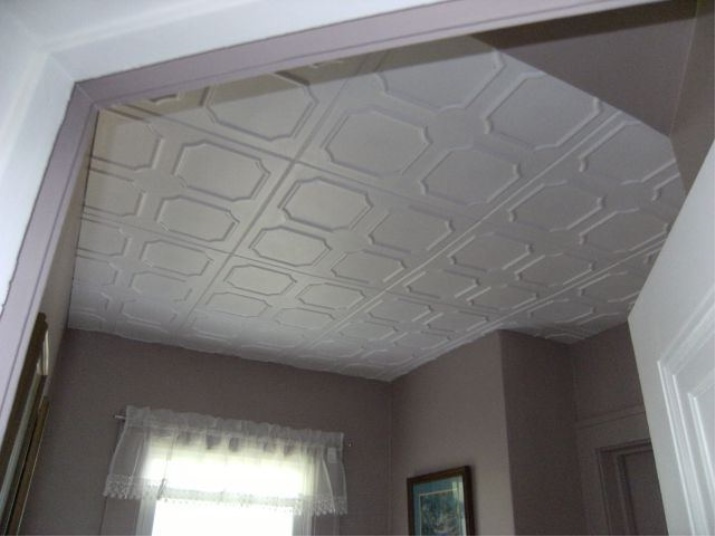
Installing such a board is simple and easy, the edges do not crumble, and the special shape of the edges allows you to hide small irregularities in the ceiling when laying.
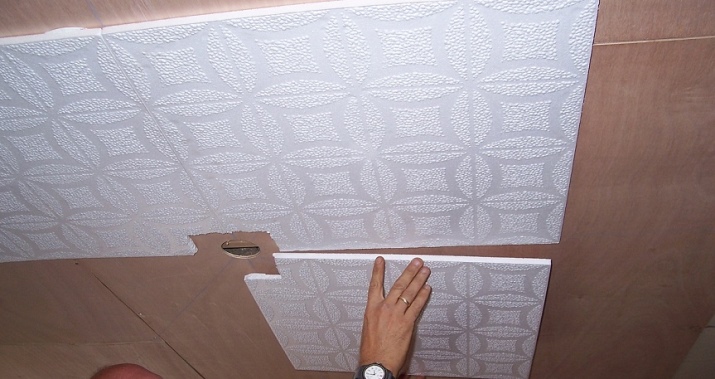
The range of such boards makes it easy to choose a suitable option for any type of interior.
Injection tile is the strongest and most durable tile available. It is a durable, environmentally friendly and safe material that is not afraid of moisture and has high aesthetic properties.
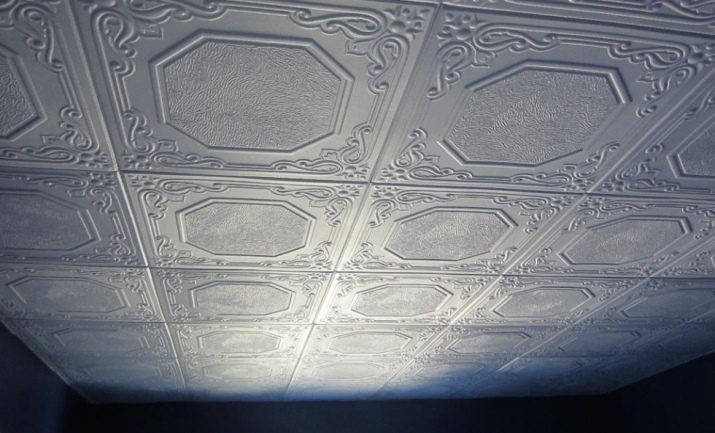
Injection tiles are available in white, to give them another color, they can be painted. Their cost is much higher than the previous types.
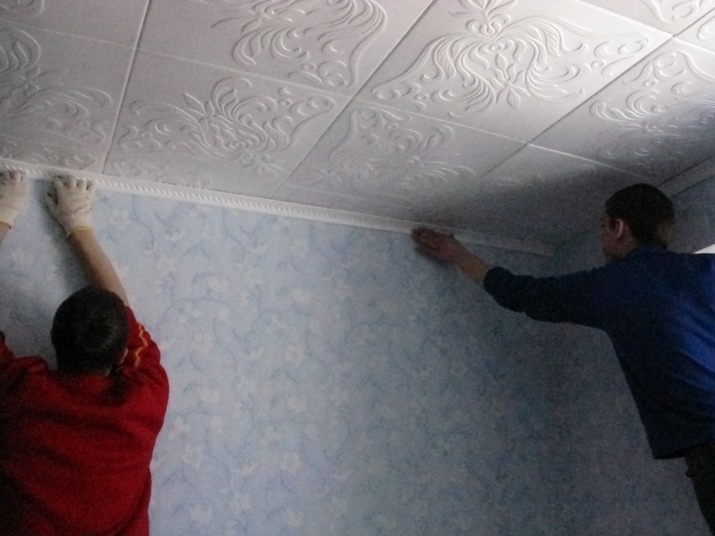
To decorate the corridor, bedroom, children's room or living room, any option can be used. The use of such panels in the bathroom is possible if injection and extruded boards are used, which can withstand high temperatures and humidity.
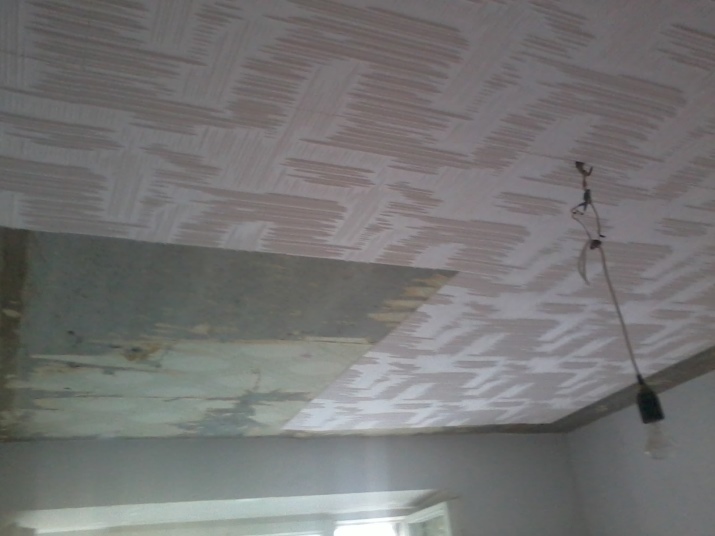
Before buying, it is necessary to assess the quality of the purchased product:
- The edges of the tiles should be even, with no chips, nicks or other deformations.
- To check the strength of the panel is very simple: you need to take it by the corner. If it does not break under its own weight, then the board is of high quality.
- The panel itself should be flat, with no visible deformations.
- The edges of the panel should be identical, so that the joints are perfectly flat and clear.
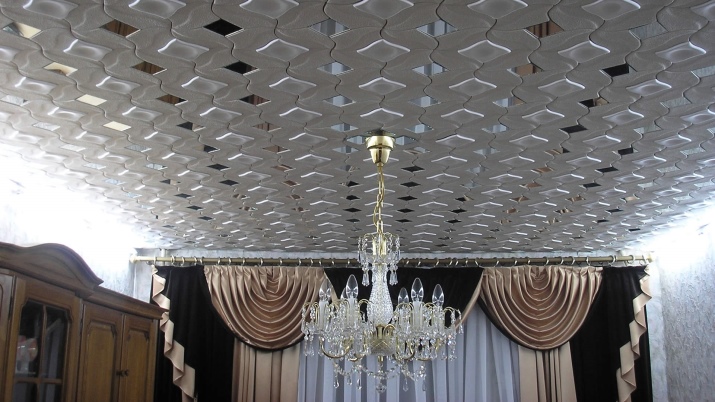
Harm - myth or truth?
When it comes to styrofoam, there is a reasonable question - isn't it harmful to the health of others, because such tiles are used not only for office and industrial buildings, but also for residential apartments and children's rooms?
Styrene, the underlying material, was first obtained by the German pharmacist E. Simon. In the course of his experiments with styrax, he obtained a new substance, which under certain conditions changed its structure.
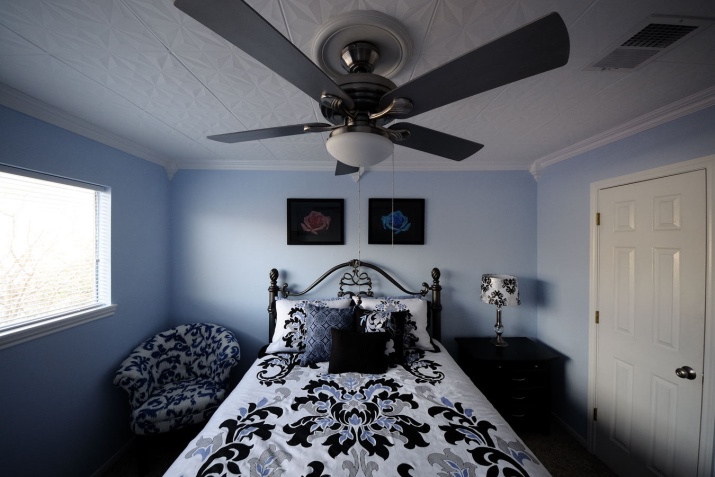
A few years later, the substance with a jelly-like consistency formed the basis of a number of products now known as "polymeric materials".
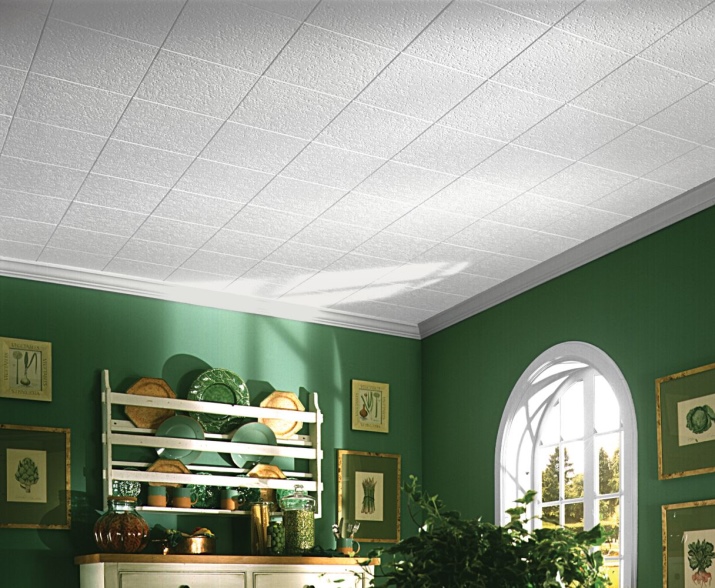
Today, the process of making polystyrene foam looks something like this: Styrene and a polymer compound are mixed in a special mold. When heated, a large number of bubbles form, which fill the entire mold. Dried boards are cut up and used for different purposes, for example, as insulation.
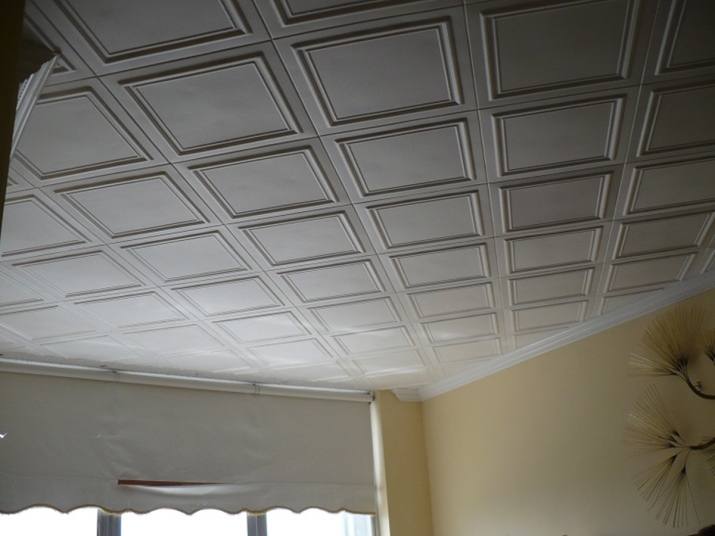
Polystyrene itself is a harmful substance. Under the influence of high temperatures, light, water, mechanical stress, the compound releases toxic styrene. Prolonged inhalation of concentrated styrene leads to lung and cardiovascular system disorders. But it is impossible to obtain such a concentration in domestic conditions. Therefore, the air in the room where such tiles are used is no dirtier than the street air with exhaust gases from cars and industrial plants.
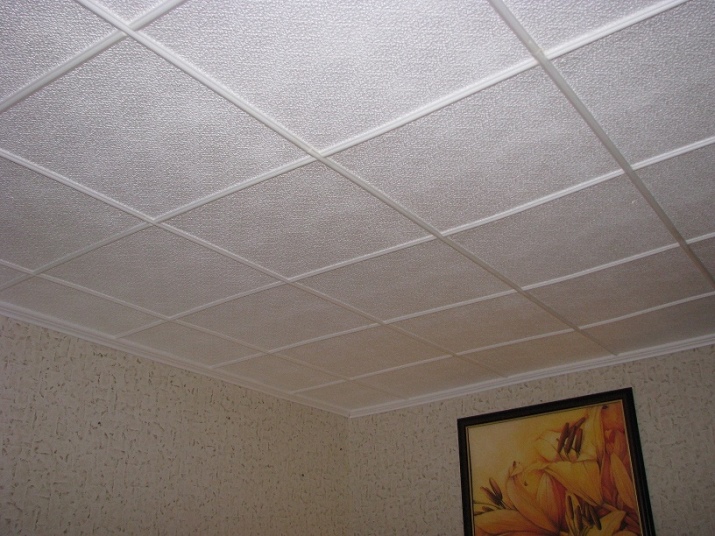
The use of polystyrene foam is not prohibited by construction regulations and health and hygiene requirements. It is allowed to use it as a construction and finishing material in the premises of different purposes.
How to glue styrofoam tiles?
For this type of tiles, a special adhesive is used. Today it is widely represented in domestic and imported versions. When choosing, it is worth paying attention to the consumption of glue per 1 sq. m. board, strength characteristics, cost. Among the most popular brands can be noted Titan, Master, Moment, Dragon, Elitans and other adhesives.
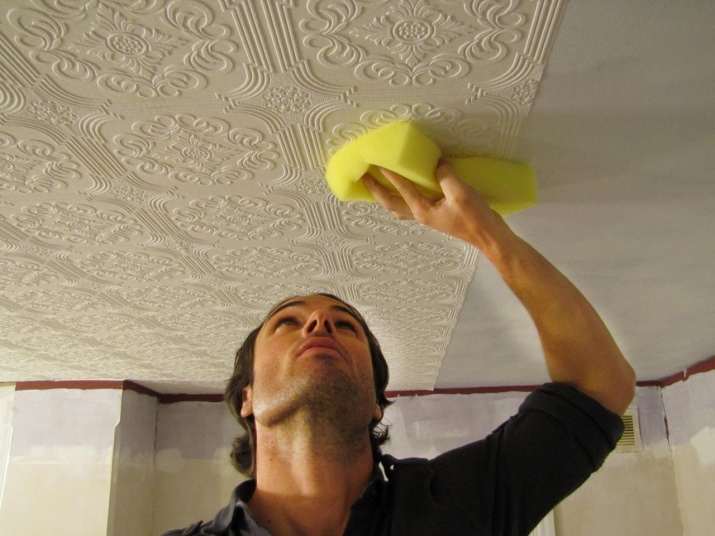
Installation of tiles begins with the preparation of the surface. It should be even, smooth, well grinded.
Determine the amount of material needed is simple: divide the area of the ceiling by the area of the tiles and take about 10% to spare for scraps and splinters.
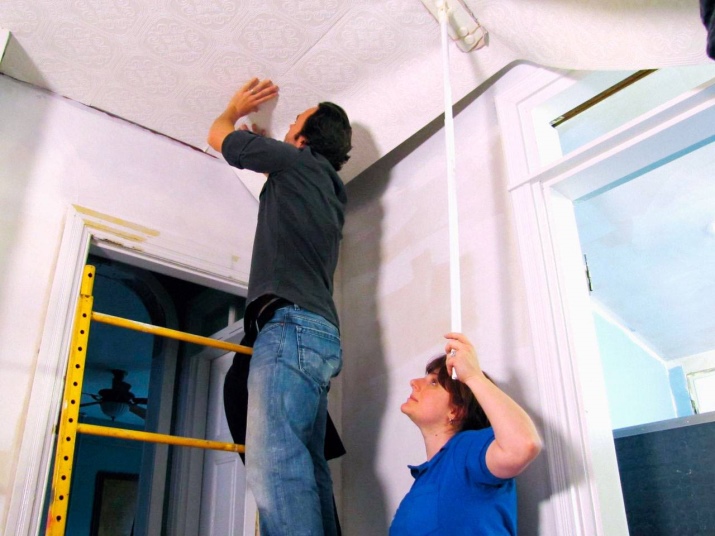
Glue the tiles begin by determining the center of the ceiling. Two perpendicular lines are drawn through this point, dividing the surface into 4 large squares. Now you can start installing tiles from a corner or from the center.
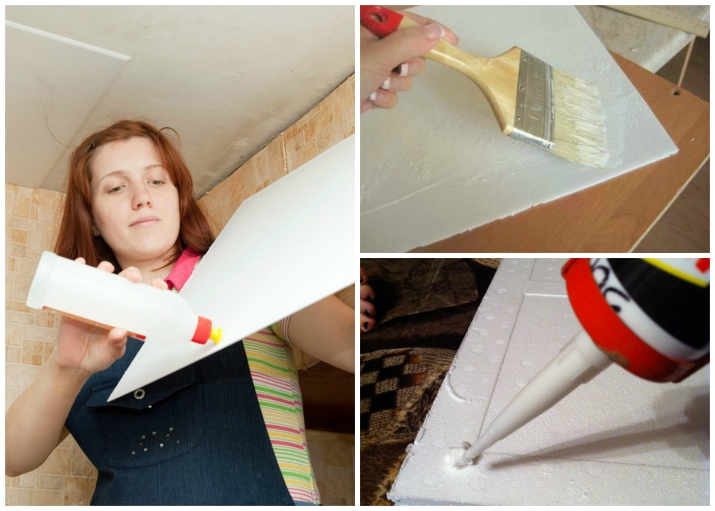
The glue is applied evenly along the diagonal lines of the tile and along its perimeter. Then it is gently applied to the ceiling and easily pressed down. Each subsequent panel is in line with the previous one without offsetting. Protruding glue is removed immediately with a dry cloth, so as not to leave a trace on the polystyrene foam.
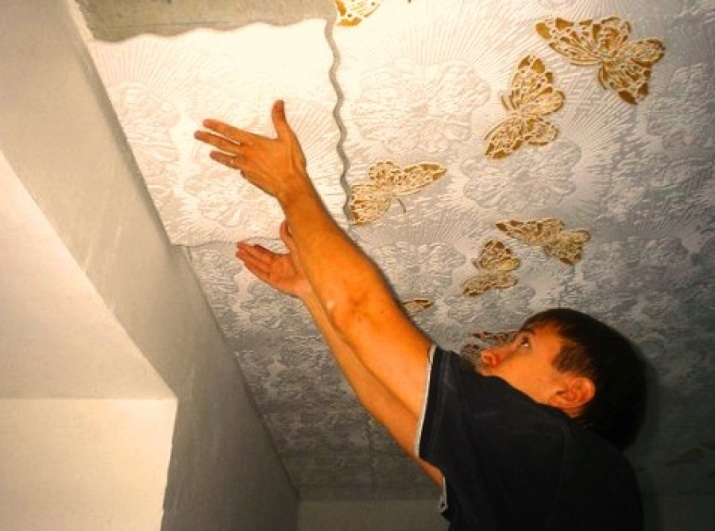
Laying can be made of panels of the same color or combined. In this case, you can lay the panels in staggered order. You will get an original and beautiful ceiling.
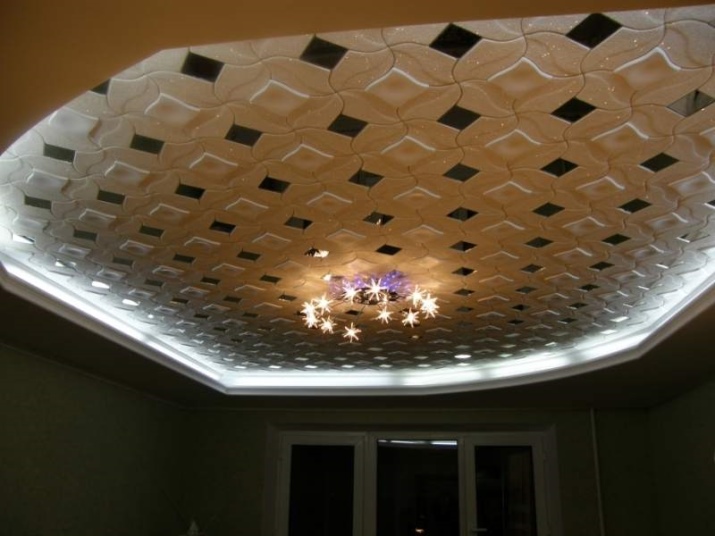
At the location of the chandelier, the hole for it is cut in the tile with a construction knife.
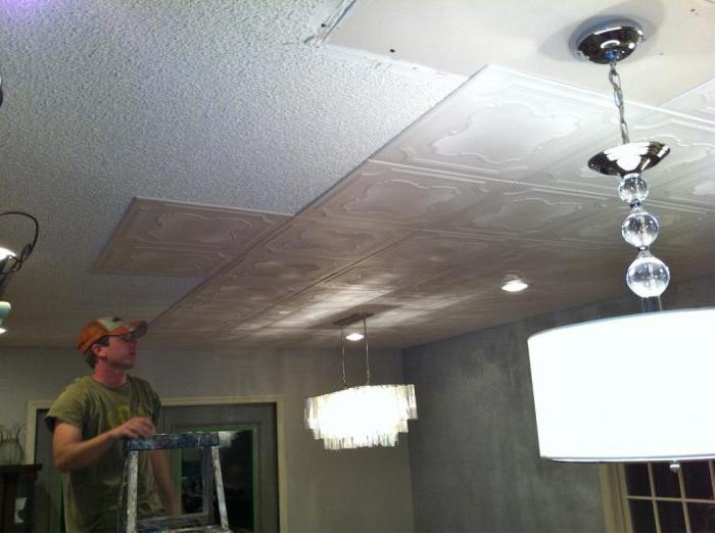
Installation work should be carried out with the windows closed, without a draft. If gaps do form between the tiles, they can be filled with white sealant. After gluing the tiles, the plinth is laid.
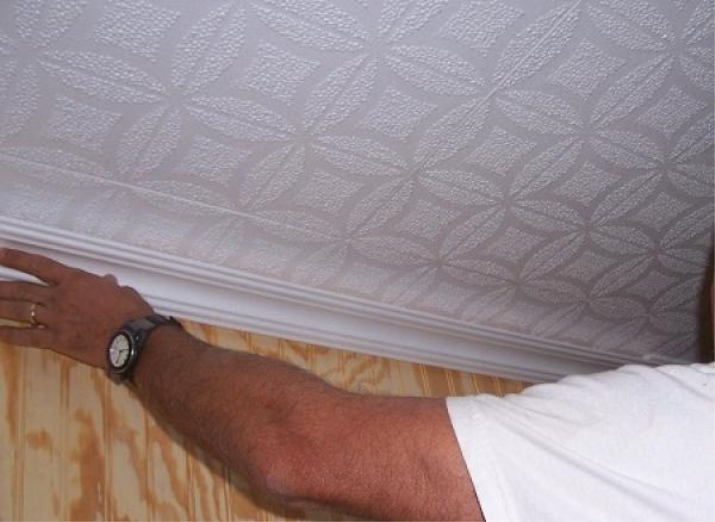
Reviews
Before choosing a ceiling coating, you need to weigh the advantages and disadvantages of different options: the range offered, performance properties, cost, practicality, strength, durability and other parameters. Make the right choice is often well helped by reviews.
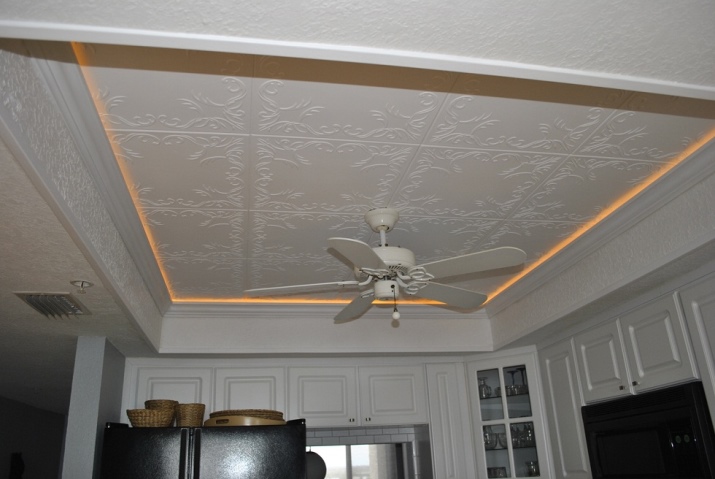
Mostly positive feedback is encountered. Buyers note the low cost of the material compared to peers, durability, simplicity and ease of installation.
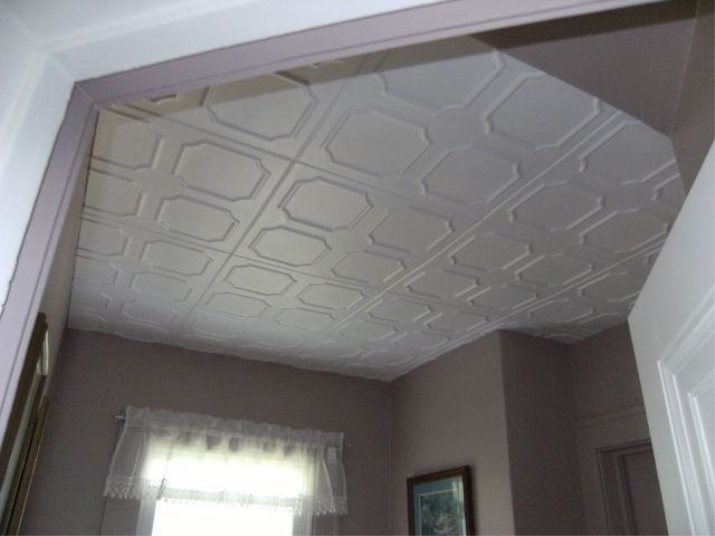
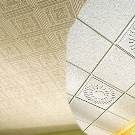


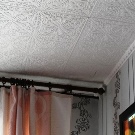
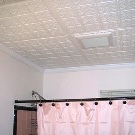
Special mention should be made of the wide model range of boards of different functional value. This is a smooth panel, and ribbed and decorated with floral, geometric, fantasy ornaments. The boards may be white or multicolored.
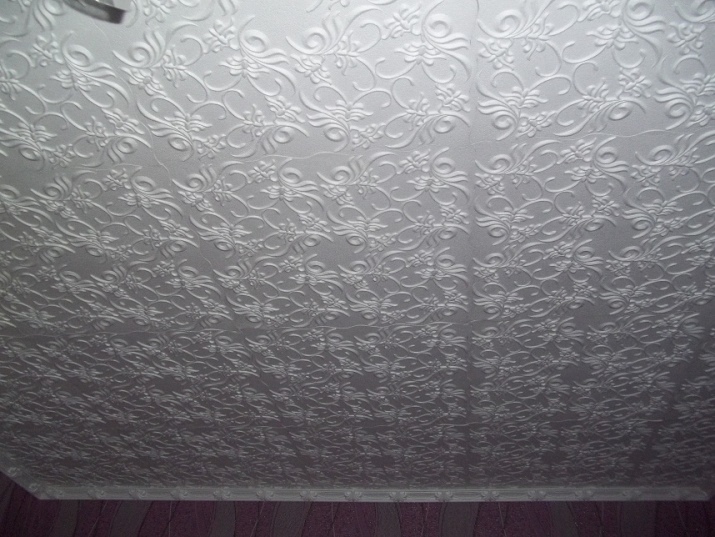
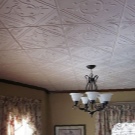
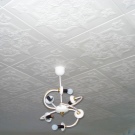
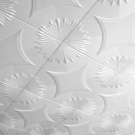
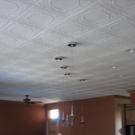

Practicality is another undeniable plus. Styrofoam tile serves for many years, dust from it can be easily removed with a vacuum cleaner or a damp cloth. If necessary, it can always be updated with water-based paint.
